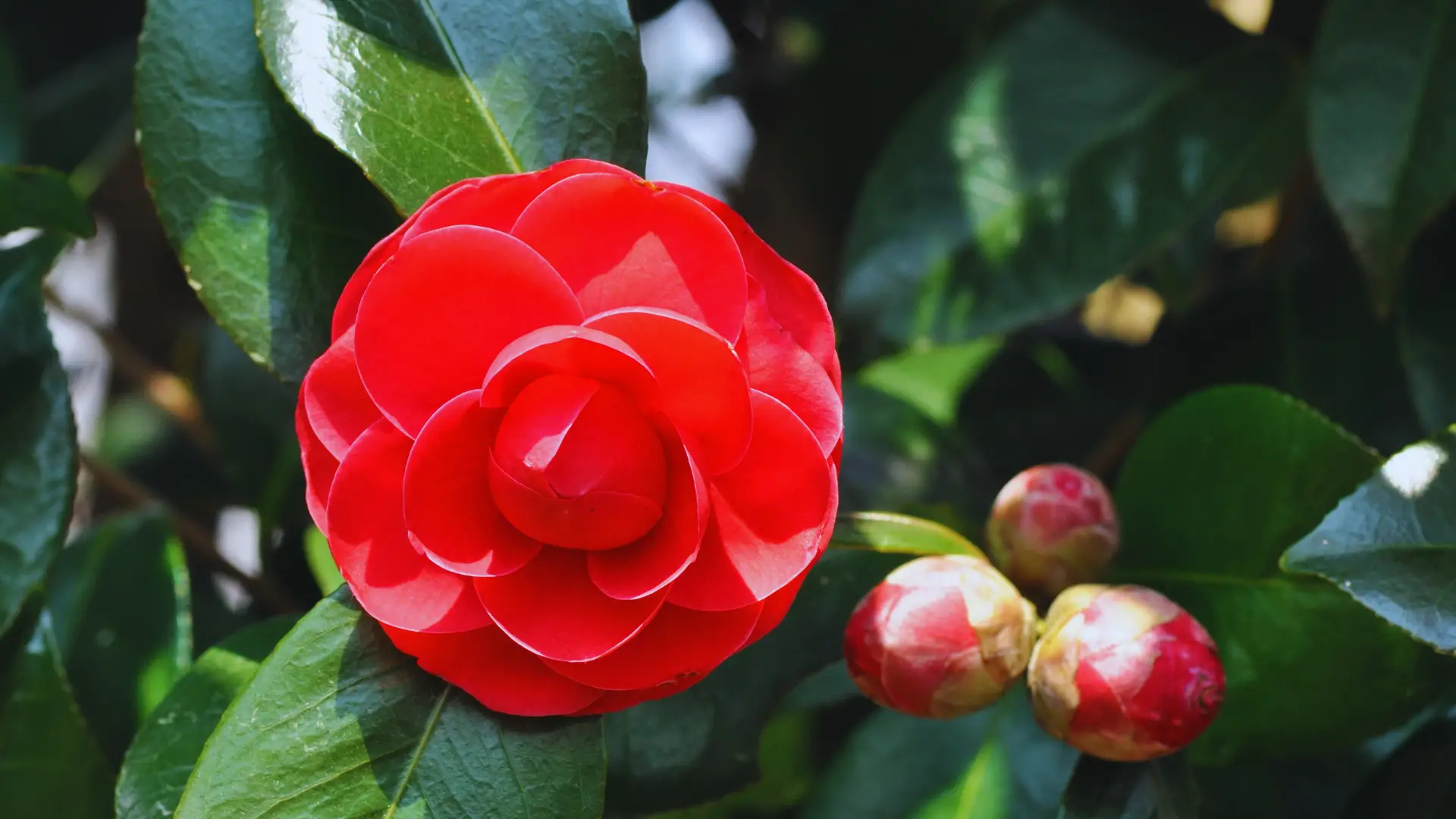Reading Time: 4 minutes 🍃
If you want gorgeous blooms that thrive all year round, camellias are some of the best flowers you can invest in. These gorgeous large blossoms thrive in the cold and bloom throughout the fall, winter, and early spring, making your landscape and gardens a sight to behold.
However, camellias need the right care to get those gorgeous winter blooms.
Part of providing the right care for camellias is putting them in the right compost, in this case, ericaceous compost. The acidic pH of ericaceous compost is perfect for camellias, which are ericaceous plants and need acidic soil. Using this compost is particularly important if your camellias are growing in garden pots.
Read on for more tips about growing camellias, including using the right compost.
What Are Ericaceous Plants?
Ericaceous plants are plants that thrive in acidic, ericaceous soil. Camellias are one of the most common species of this plant variety, as are rhododendrons.
Ericaceous plants are plants that grow best in acidic or ericaceous soil and do not thrive in any alkaline soil. Sometimes they are called “lime haters” because they despise any soil that has traces of lime in it.
Ericaceous soil is soil that is acidic. When soil is not naturally acidic, you can add ericaceous compost to the mix to bring down the pH, which helps plants such as camellias thrive.
The compost is usually made of a mix of acidic natural materials, such as leaves, pine needles, coffee grounds, and even ground-up Christmas trees.
What Are the Benefits of Using Ericaceous Compost with Camellias?
There are a few benefits of using ericaceous compost with camellias, including
- Making the soil the right acidity—Camellias do best when grown in acidic, lime-free soil, and the low pH of ericaceous compost means that it achieves this goal when mixed with regular soil.
- Helping the plant thrive in garden pots—Ericaceous compost is one of the best options when using potted plants. By not mixing in regular soil from the ground, you can control the soil’s pH and maintain the best conditions for camellias.
- Feeding the plant—Ericaceous compost has plenty of nutrients so that camellias can thrive without needing to add extra fertilizer or plant food to the mix.
- Retaining water well—Ericaceous compost holds on to moisture, so you don’t have to water your plants very often.
How to Use Ericaceous Compost with Camellias
Camellias are very sensitive to lime and do not thrive in soils that have any degree of alkalinity. If you have neutral soil, you can mix the ericaceous compost directly into the garden bed to lower the pH enough for the camellias to thrive.
Test the acidity of your garden by taking a soil sample and mixing it with vinegar—if you notice bubbles; your soil is too alkaline for camellias to thrive.
If you don’t already have neutral or acidic soil, a better way to plant camellias and get the most out of your ericaceous compost is to place the plants directly in garden pots. When you add soil to garden pots, you get to control the acidity of the terrain.
Planting the camellias in a mixture that is mostly ericaceous compost ensures that the camellia will have an environment that is acidic enough for them to grow.
There are other benefits to planting camellias in a garden pot besides getting the most out of your ericaceous compost. Using pots gives you flexibility about where you put your camellias, which is useful for when you want to take the plants out of the direct sun.
It also allows you to save space so you can have gorgeous winter blooms even if you don’t have a massive garden or lawn.
More Tips for Growing Camellias
One of the most important things you need to know about caring for camellias is that these plants need acidic soil, which you can easily take care of with enough ericaceous compost. However, there are other tips and tricks to get these winter blooms to thrive and brighten up your cold evenings.
Camellias thrive in partial shade, so deciding where you will plant these flowers is almost as important as which soil and compost you will use for their beds. Don’t put them somewhere in direct sunlight; even full shade is better than that.
An area of the garden that gets morning shade or dappled sunlight is the best for camellias (Of course, as mentioned above, if you have garden pots, you can move the plants throughout the day.). When choosing the spot for your plant, make sure that it isn’t exposed to direct wind either.
The time of year when you plant your camellias will also help these plants thrive. If you’re planting in a garden pot, you can plant camellias whenever you want, although if you plant in the winter, you probably won’t get blooms until next year.
However, if you are planting directly in the ground, autumn is the best planting season because the soil is still warm enough for the roots to establish.
Once you plant your camellia, it’s time to maintain it so the blossoms can thrive. Water camellias thoroughly because these plants thrive in a moist environment. If you live in an area with hard water, water your plants with rainwater instead of tap water because the calcium in tap water can hurt camellias.
You don’t have to feed the plants unless you notice them drooping because the ericaceous compost holds plenty of nutrients.
Final Thoughts
In most cases, camellias need ericaceous compost to create the acidic conditions in which these plants thrive. The best way to plant camellias is to grow them in garden pots with only ericaceous compost, ensuring the soil is acidic enough.
Other tips for ensuring the best winter blooms include placing your camellias in a shady, sheltered spot without too much wind or sun and watering them regularly to help them thrive.
Sources
- https://www.gardenersworld.com/how-to/grow-plants/how-to-grow-camellias/

- https://horticulture.co.uk/ericaceous-compost/
- https://www.express.co.uk/life-style/garden/562005/How-to-grow-camellias-Alan-Titchmarsh


